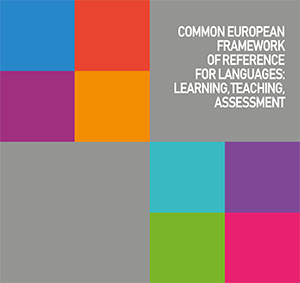Reading comprehension
Testing and assessing reading and listening comprehension pose many challenges in that they are internal processes and their assessment requires samples of external behaviour. This can happen by overt verbal behaviour (speaking and writing) and/or non-verbal behaviour. Listening and reading are also very complex processes. Consequently, constructing tasks that elicit relevant evidence of comprehension is demanding.
In evolutionary terms, speech predates writing. All communities have speech but not all languages even now have writing, which emerged only a few thousand years ago. Speaking and writing have similar functions but writing as a new cultural technology (production of texts) had a powerful impact on cognition, communication, schooling, societal and cultural development. The archetype of human communication is face-to-face oral interaction. Advances in information technology have narrowed the original fundamental distance between written and oral communication by allowing writing to simulate in many ways on-line face-to-face oral communication.
While listening and reading comprehension share a number of features, listening poses some specific challenges, which arguably makes it harder to assess listening than reading comprehension.
The investigation of learning to read, to teach and to assess reading has a long history and shows a range of issues and approaches. While reading in L1 and in L2 are not identical, there are a number of similarities and research on L1 reading and reading comprehension can provide a lot of useful information for L2 reading. Traditionally in L2 contexts, reading was construed as a “passive” language skill. Developments in linguistics and psychology (eg., generative grammar and cognitive psychology) transformed the view from reading being a passive transfer of meaning in the text to it being a very active “effort after meaning”, a process consisting of a great number of contributing factors and processes (sub-components and enabling skills). Both bottom-up and top-down processes were found to play a role.
While there is no consensus on the construct of reading comprehension, it is generally recognised that in assessing reading comprehension, it is necessary to pay attention to the role of the text (text types), the reader (skills and knowledge resources), the context (domains of language use) and the purposes of reading.
As reading comprehension is often appraised by using tasks (questions, items) it is important to be aware that the difficulty of the items varies and it can be purposefully manipulated by varying the text characteristics and the tasks characteristics.
For a more detailed discussion issues to take into account when investigating a specific context, see the Background paper.
The CEFR online :
CEFR - Companion volume (2020)
French version (Version française)
Arabic version (النسخة العربية)
Basque version (Euskarazko bertsioa)
Italian version (Versione italiana)
Spanish version (Versión en español)
Turkish version (Türkçe versiyonu)
International Sign Language (Translated from the Orginal version)



